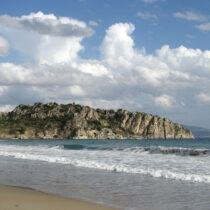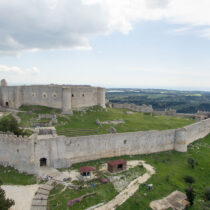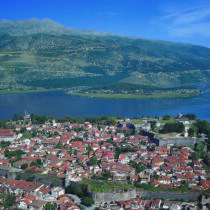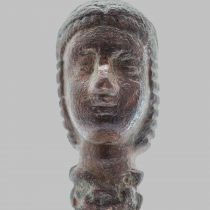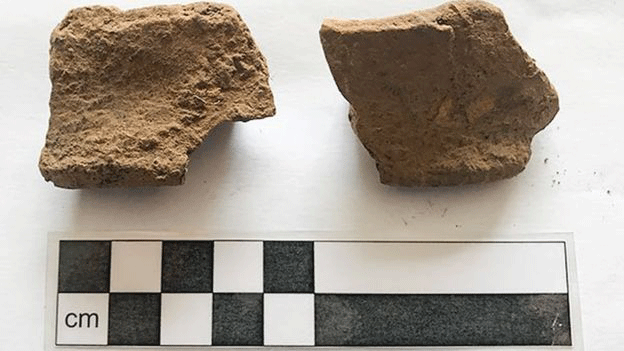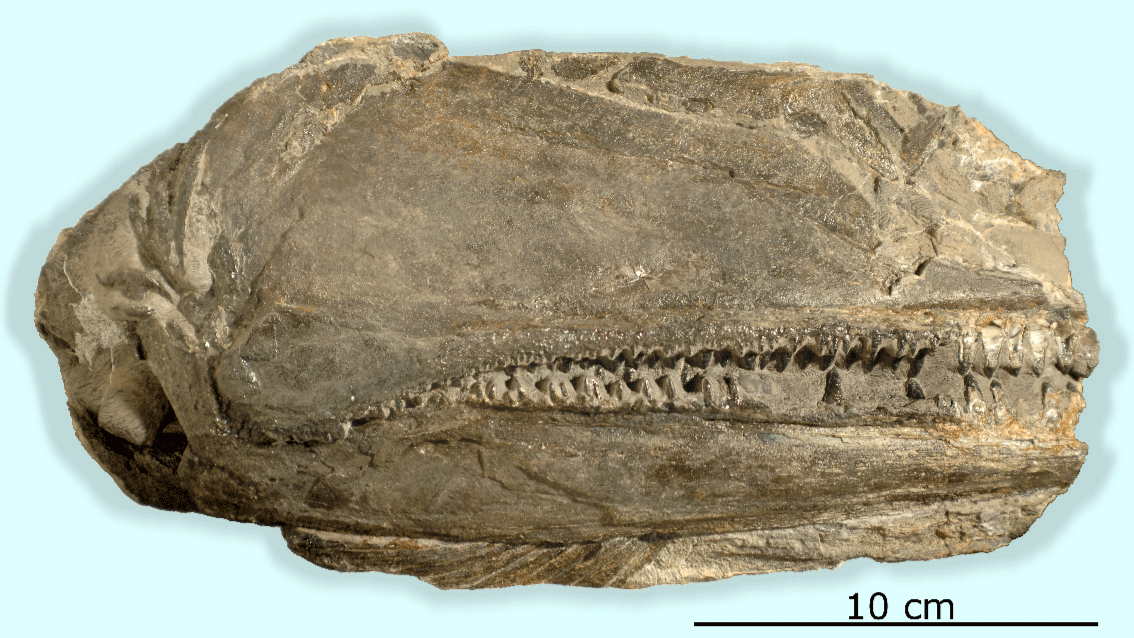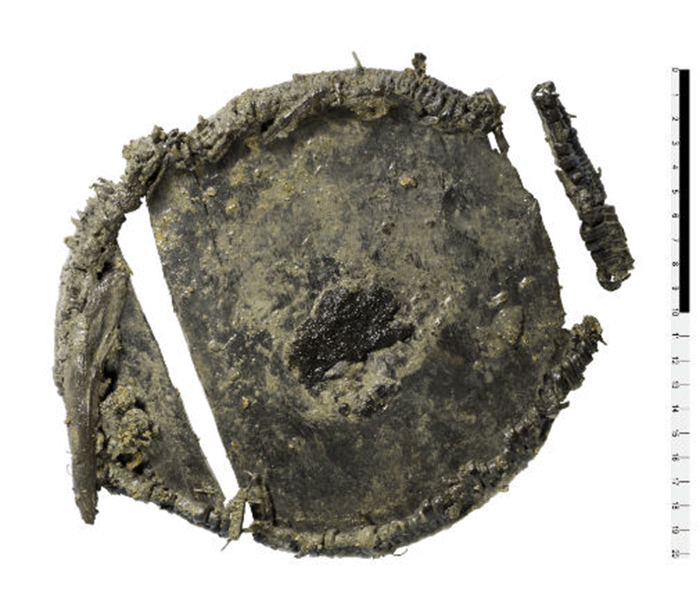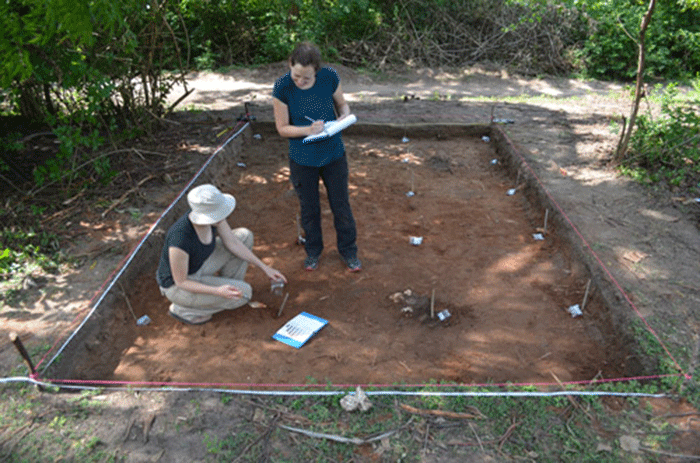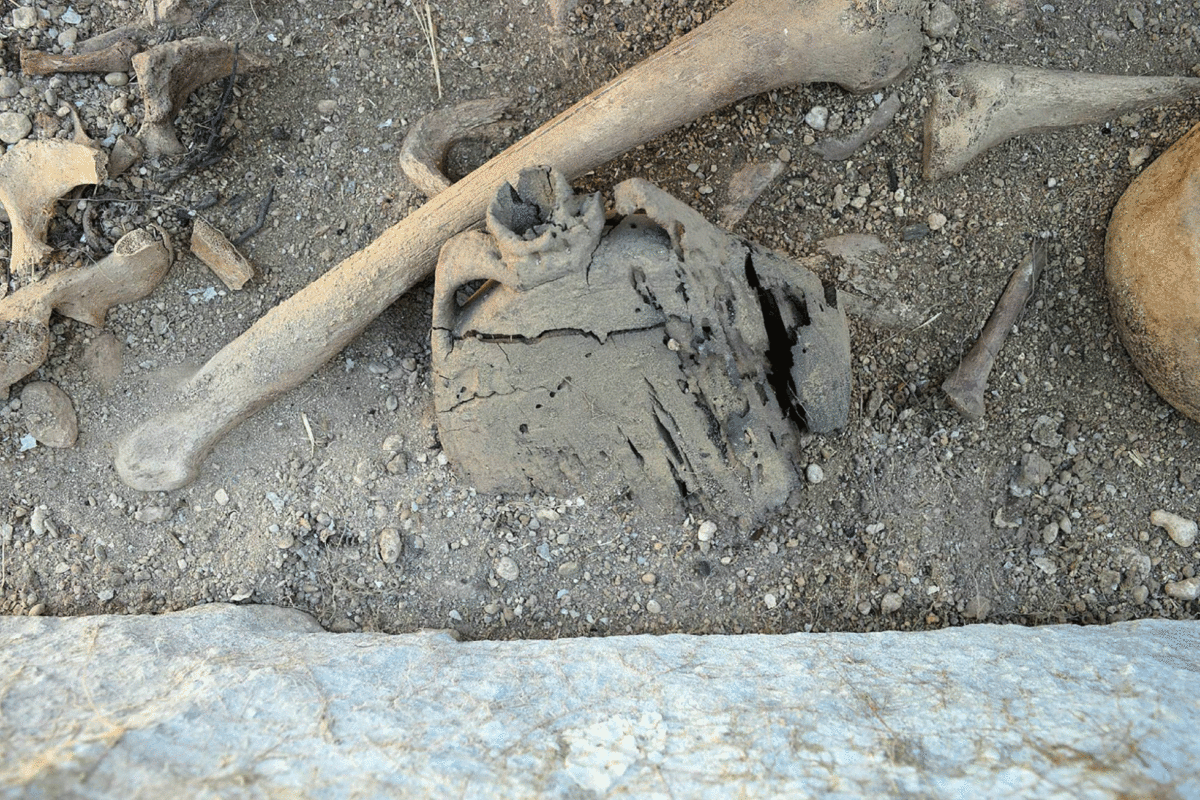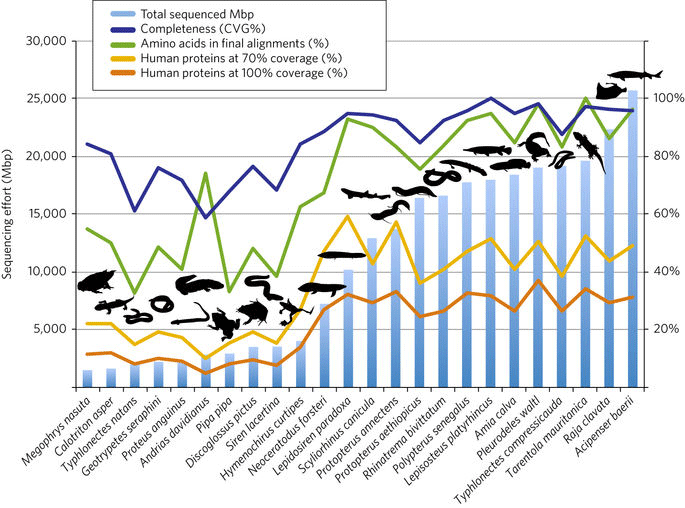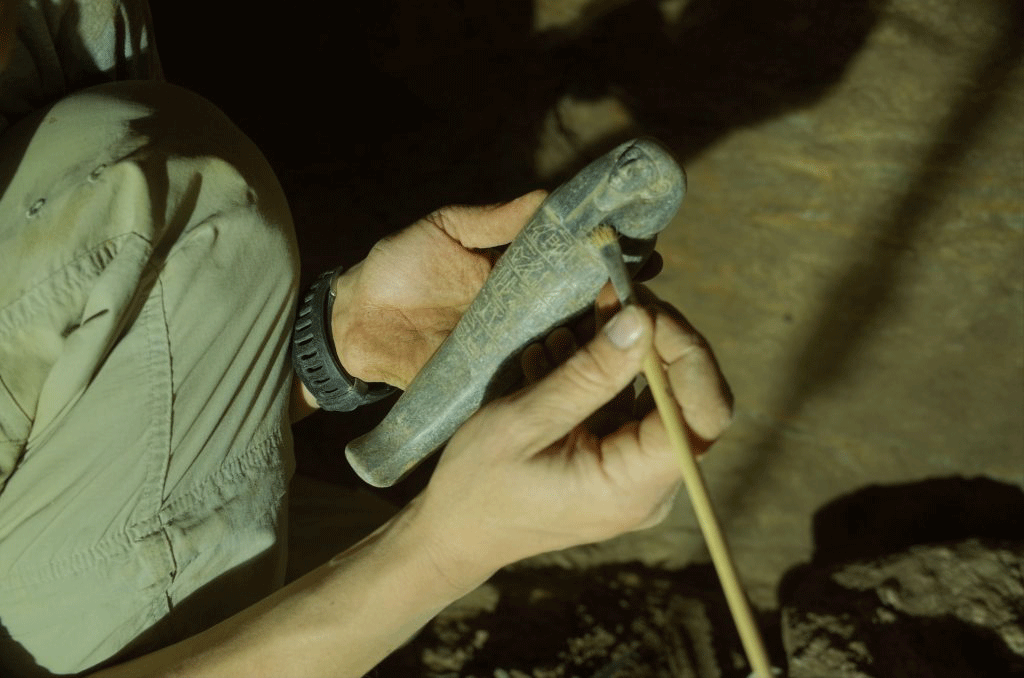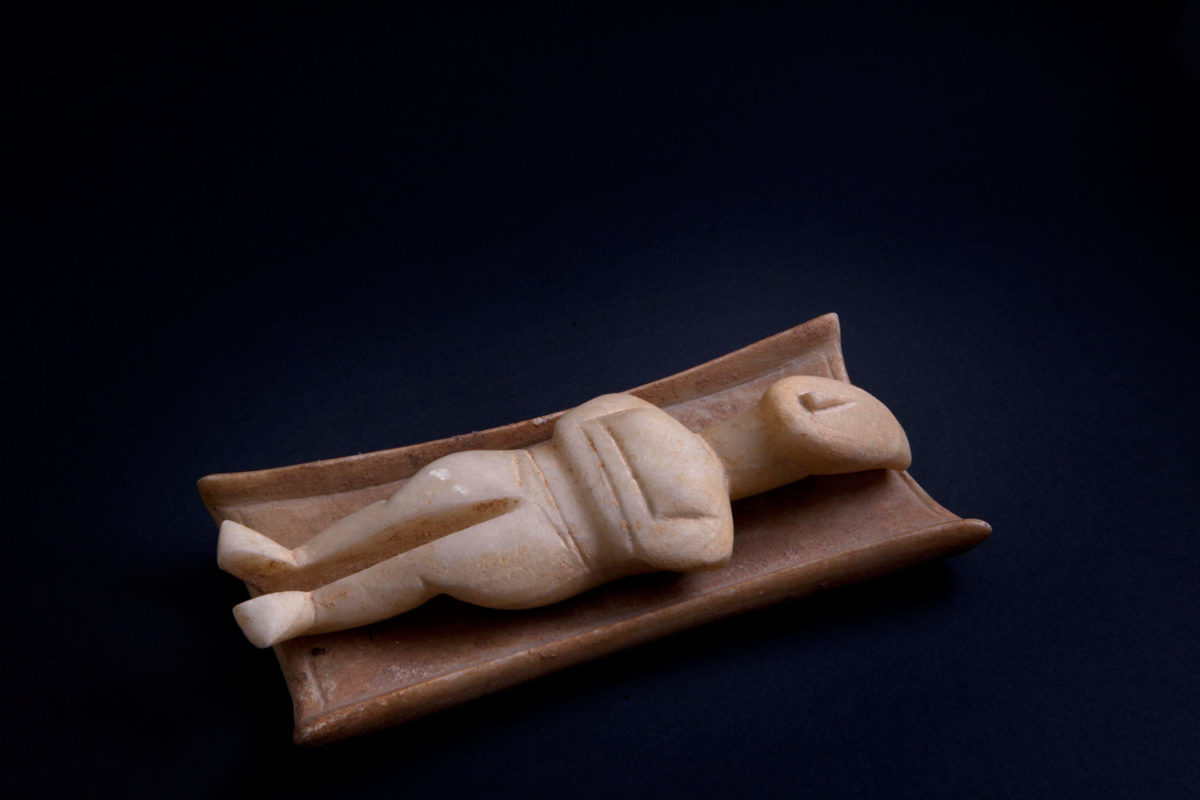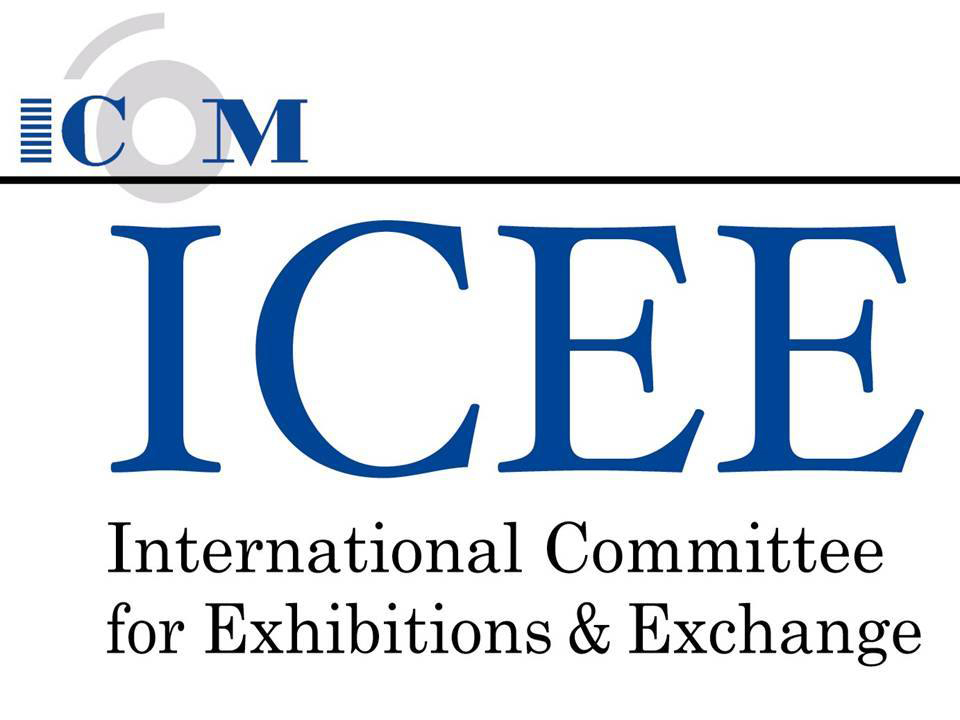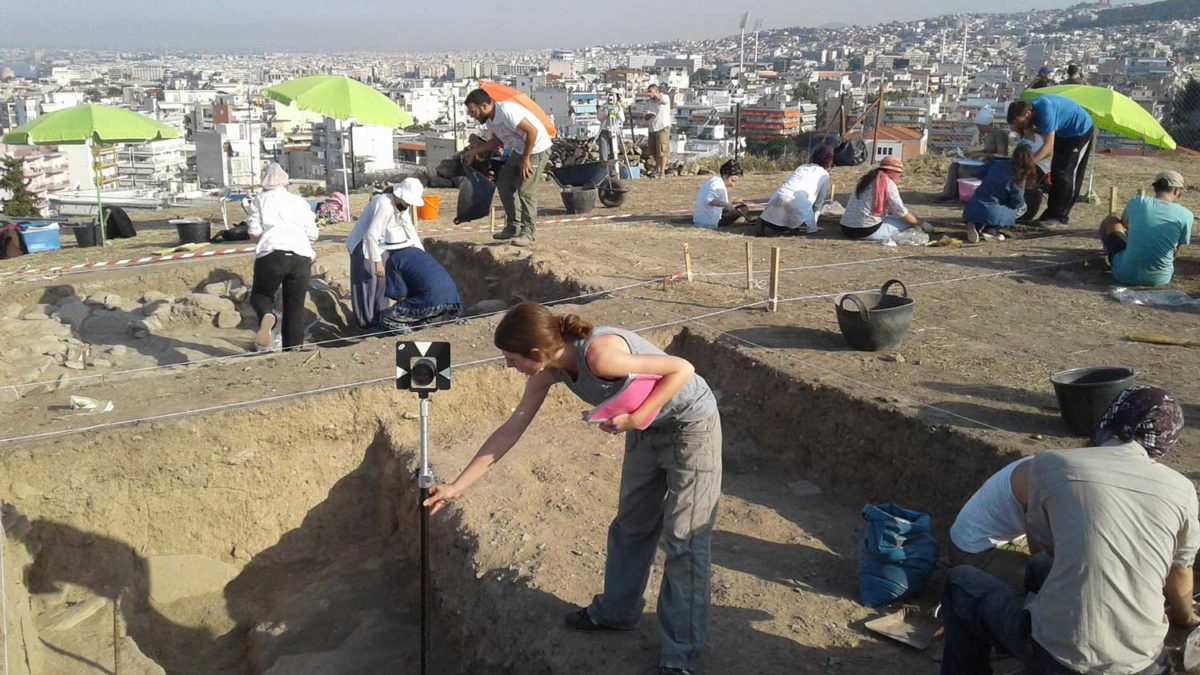Bourse de Commerce sketches to be restored
Over 200 architectural sketches of the Bourse de Commerce building in Paris will be restored thanks to funding by French billionaire and art collector Francoise Pinault.
Ancient books examined by biologists yield all sorts of information
Evolutionary biologists explore ancient books to retrieve DNA and protein samples and get biological information on animals and people in past times.
Archaeologists in Scotland discover incense pot
The remains of the pot were found at the Ness of Brodgar in Orkney and although they might not seem very impressive they are important, archaeologists say.
Food chains recovered more rapidly after mass extinction than thought
The discovery of the fossilized skull of a large predatory fish called Birgeria americana shows that food chains recovered more rapidly after mass extinction than thought.
Cultural flexibility allowed early humans to survive dry periods in southern Africa
The flexibility and ability to adapt to changing climates by employing various cultural innovations allowed communities of early humans to survive through a prolonged period of pronounced aridification.
Key to tracking ancient wheat found in frozen Bronze Age box
A Bronze Age wooden container found in an ice patch at 2,650m in the Swiss Alps could help archaeologists shed new light on the spread and exploitation of cereal grains following a chance discovery.
Earliest domestic structures on Zanzibar are excavated
Excavations during June 2017 have for the first time uncovered a domestic structure at the important site of Unguja Ukuu on Zanzibar.
Ancient wine press found in the desert in Israel
Archaeologists in Israel have discovered a 1,600-year-old wine press within a 4th century Byzantine structure.
Bronze Age cemetery is discovered under a necropolis in Spain
Archaeologists in Spain have discovered a burial site dating to the 10th century BCE beneath a Visigoth necropolis.
Manuscript on recycled parchment piece is deciphered
The text in a bookbinding piece of 16th century parchment is revealed by imaging techniques.
Evolutionary biologists decipher evolutionary relationships among vertebrates
Evolutionary biologists were able to construct a new phylogenetic tree of jawed vertebrates, resolving several key relationships that were controversial.
Pictish longhouse discovered in Scotland
Archaeologists in Scotland have uncovered evidence of a Pictish longhouse and a 1,100-year-old coin at Burghead Fort.
Greek mosaic found in ancient city of Perge
A new mosaic has been discovered in the ancient city of Perge, Turkey, with an illustration of the sacrifice of Iphigenia, daughter of king Agamemnon and Clytemnestra during the Trojan War.
Earthquake on Kos island damaged antiquities
Monuments and archaeological sites on the island of Kos have been damaged by the earthquake that shook the island on Friday.
Scientists in Asia find 5,000-year-long record of tsunamis
Scientists investigating the seismic history of Indian Ocean to better understand quake and tsunami dynamics have discovered a record of tsunamis dating back thousands of years.
Ancient smiley face dates back 3,700 years
Archaeologists in Turkey have discovered a 3,700-year-old pitcher with a smiley face painted on it.
Hundreds of man-made caves found beneath Nottingham
Hundreds of man-made caves lie beneath Nottingham, used throughout the centuries as dungeons, bomb shelters, beer breweries or cellars.
Goldsmith’s tomb revealed on River Nile island
A previously unknown tomb, some 3400 years old, has recently been uncovered on the island of Sai in the River Nile.
Travelling to Cycladic Culture
Through the exhibition, visitors to Athens International Airport will get a first impression of what the Cyclades were like in 3000 BC, before visiting today’s islands of the Aegean.
2018 ICEE Conference Hosting Partners
A unique opportunity for institutions to engage with a diverse network of exhibition professionals, build international networks, showcase the work of local institutions and create business opportunities.
Strong concern about Hagia Sophia, Istanbul
The adverse experience of the conversion to mosques of other churches by the same name, with catastrophic operations on monuments and mainly on their decoration, does not allow complacency.
Life around the ….’tropical’ lake of Gavathas
Paleontological evidence was recently published in a prestigious scientific journal, providing data on the ecosystem round the tropical lake that existed In the Gavathas region 19 million years ago.
International Summer School of Archaeology and Greek Language in Thessaloniki
Participating are undergraduate and postgraduate students from universities abroad, who are studying archaeology, history of art, anthropology, classics and history.
The deep antiquity of Aboriginal occupation
Aboriginal people have been in Australia for at least 65,000 years – much longer than the 47,000 years believed by some archaeologists.

